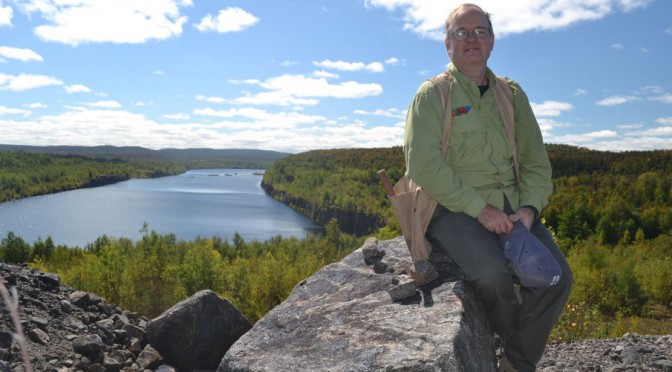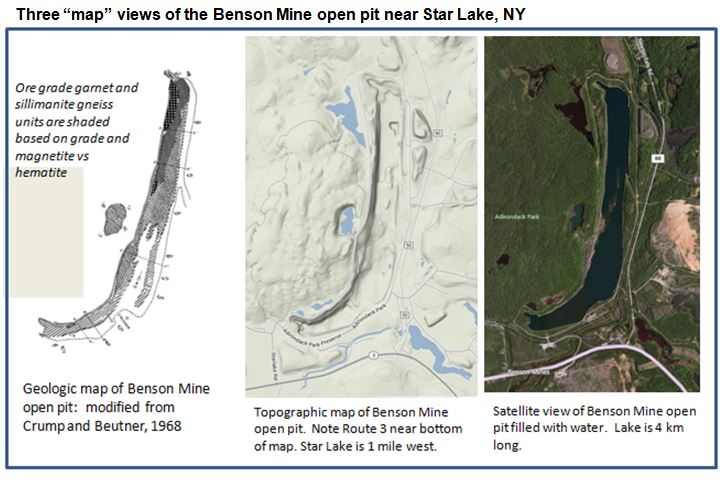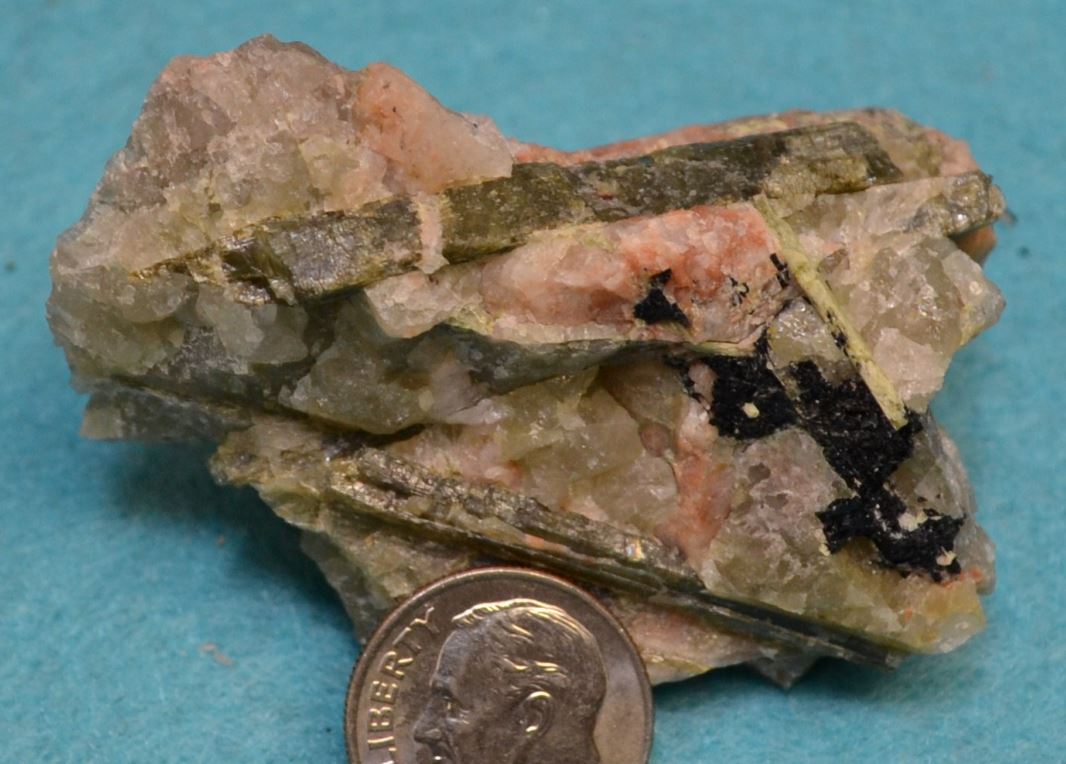Have you driven Route 3 in southern St. Lawrence County? Did you know that as you pass just east of the small hamlet of Star Lake you are just hundreds of feet south of what was once the largest open pit iron mine in the world? That’s right, in 1958, during the height of its life, the Benson Mines open pit iron mine held that lofty title. The pit was 4 kilometers long, 250 meters across and 400-600’ deep. Today the pit is host to a whole lot of brilliant blue water and the surrounding Adirondack Park region is forest covered and virtually pristine wilderness.
The high concentration of iron in the rocks of the region was first recognized in 1810 when engineers surveying for a military road found their compasses wandering. But until the timber industry built a railroad to the region the iron ore could not be exploited. Even with rail, the area was still remote and from 1890 to 1940 mining was sporadic and limited. In 1941, Jones and Laughlin Steel Company leased the properties and constructed plant facilities.
For over four decades the region thrived as iron ore was extracted and concentrated on site. The ore averaged 23% iron and was concentrated to over 60% for shipment to steel centers like Pittsburgh. Mining ceased to be economic in 1978 when the US steel industry declined and taconite processes in Minnesota captured the remaining demand. The Benson Mine deposit is not mined out. Rather, iron can be recovered less expensively elsewhere.
As is true across the Adirondack region, the original character of the rocks in the iron district surrounding Star Lake has been virtually obliterated by upper amphibolite to granulite facies metamorphism during the Grenville orogeny some 1.1 Billion Years ago. However, geologists working with the full rock exposures available when the open pit was being mined ascribed the origin of the iron to precursor sedimentary processes. In 1970, in a professional journal article on the mine, Palmer wrote “In view of the impressive conformity of ore to a single horizon in the paragenesis, the ore is believed to have a metasedimentary origin”. This would suggest an origin similar to the banded iron formations in northern Minnesota except that those rocks were not buried, metamorphosed, and intensely folded.
The product of all the metamorphism and structural activity in the Benson Mines area was a series of mafic gneisses with minor granitic component and skarn bodies that are now overturned and steeping dipping along a N-S trend. Some units are rich in garnet, others contain abundant sillimanite, but the economically important minerals are magnetite and hematite, presumably marking the locations of the original iron-rich sedimentary units. The hematite often occurs as martite (i.e. pseudomorph after magnetite). None of the iron oxides make for spectacular mineral specimens, but what the region may lack in quality specimens, it makes up for in quantity, not to mention the scenic beauty of the newly formed lake.
Sillimanite (the elongated green minerals in the photo above) is not only found in the host gneiss, but also in pegmatites that crosscut the metasediments. The alumino-silicate is associated with chyrsoberyl, muscovite, and quartz and forms crystals up to 20 cm in length. The muscovite books are also large in some of the pegmatites. A few rare molybdenite specimens were found there.
A visitor to the site today likely won’t find silliimanite like that depicted in Lupulescu’s 2008 Rocks and Minerals article (see photo upper left), but one will find abundant large sillimanite phenocrysts within the gneiss of the mine dumps and the muscovite site is most impressive on a sunny day. Magnetite ore is everywhere; the non-magnetic ores with martite can be distinguished from magnetite if you remember to bring your magnet. But remember, your compass won’t help you here should you get lost.
References:
Buddington, A.F., and Leonard, B.F., 1972, Regional Geology of the St. Lawrence County Magnetite District, Northwest Adirondacks, NY, USGS Prof. Paper 376, including a 1:62,500 scale geologic map of the entire mining district
Crump., R. M., and Beutner, E. L., 1970, The Benson Mines Iron Ore Deposit , St. Lawrence County, NY, in Ore Deposits of the US, 1933-1967, p.49-71.
Hall, Russell, J., 2005, Gem of the Adirondacks: Star Lake, Benson Mines, and the Global Economy, published by Lighthall Books, Gainesville, FL., 190 p.
Lupulescu, M., 2008, Minerals from the Iron Deposits of New York State, Rocks and Minerals, v. 83, p. 248-266
Palmer, D., P. 1970, Geology and Ore Deposits Near Benson Mines, New York, Economic Geology, vol. 65, p. 31-39.



Mr. Haynes, I just read your 2014 article on Benson Mines, as a former pit supervisor I feel I should point out one error in your piece. The mountain range in the Star Lake area is the Adirondacks. With regards & respect, James LaParr
Oh my, of course it is. What a bad error and to think it was there for 4 years before someone told me! Thank you and I have corrected it. I know that distinction between Adirondack and Appalachian Mts. very well, but must have been thinking ahead when I typed that and then read over it too fast every time thereafter. Thank you again.